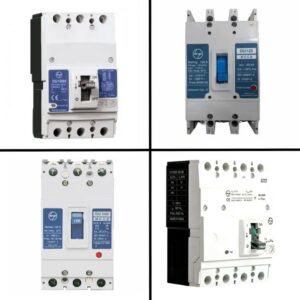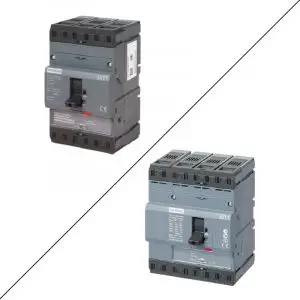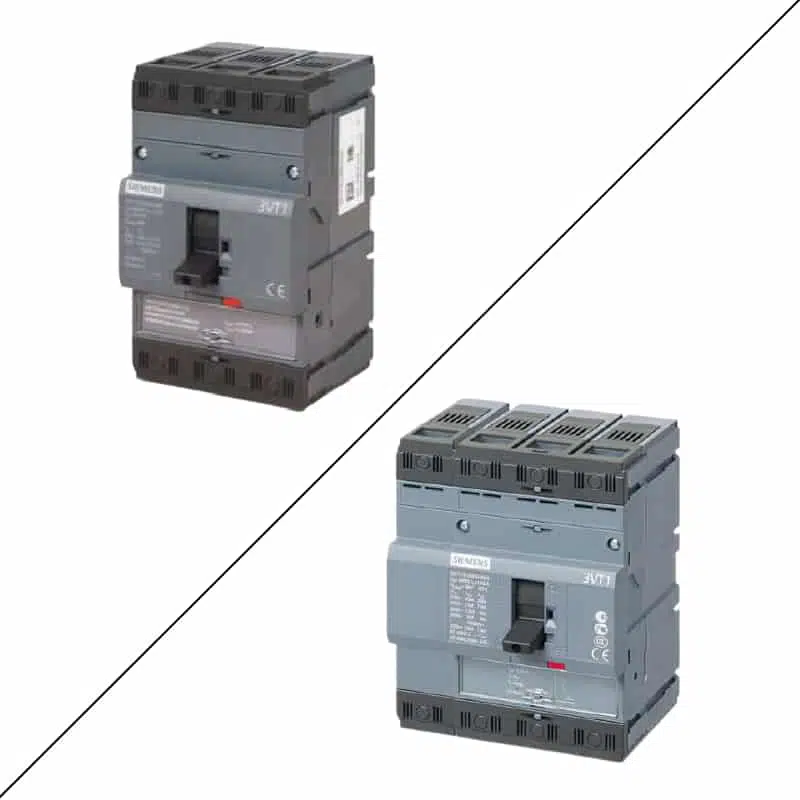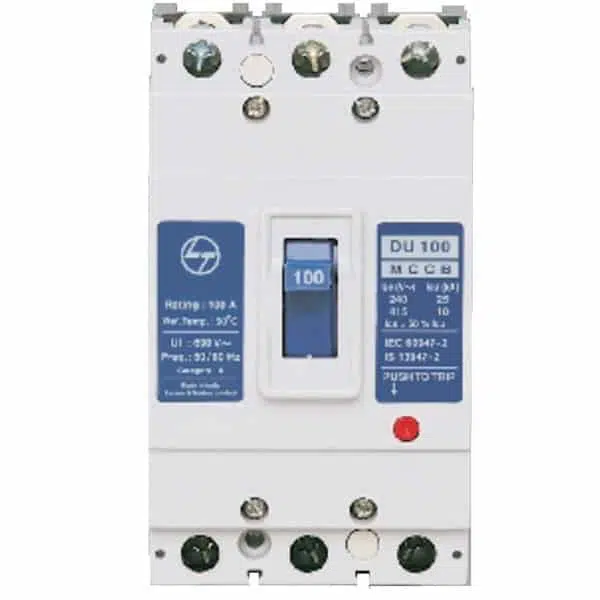MCCB – MOULDED CASE CIRCUIT BREAKER
MCCB or Moulded Case Circuit Breaker is a type of circuit breaker which is used to stop the excessive flow of current on load by breaking the circuit. It protects the system or the circuit from over-current. It is mainly used for industrial and commercial purposes.
By commercial, it is meant by the main distribution supply of buildings and industrial means in large machinery at plants. It has a rating of 1000 Ampere and it has a breaking capacity of 10kA- 100kA. MCCB’s have a built-in alarm contact system, whenever there’s excess current on the load or a short circuit MCCB trips and breaks the circuit and also sounds an alarm to let everyone know.
OPERATING PRINCIPLE:
MCCB’s are used for over-current protection. There are various types of working features in an MCCB:
Magnetic trip function:
whenever there’s a short circuit in the system/motor/transformer, this trip function works. Because there’s a current transformer connected in the MCCB which triggers the break-to-contact to ‘off’ position due to magnetization resulting from over current.
Thermal trip function:
There’s a bimetallic plate attached within the MCCB which bends due to heat resulting from over current. This bending triggers the break-to-contact to ‘off’ position.
Under voltage trip function:
All the 3-phase motors work on 415 volts. If for some reason lesser voltage is permeated then this trip function triggers to save the motors from damage.
Under and over frequency trip function:
In India, we use a 50 Hz line, there are machines that can run under/over that frequency and there are machines that can’t. So, these MCCB’s trigger when there is any discrepancy in frequency.
Current unbalanced trip function:
When there’s any short circuit in the system or a sudden increase of load in the system, this trip function triggers.
Power factor trip function:
When the power factor drops or increases from the set value of the MCCB, this trip function triggers.
Shut trip function:
There’s an emergency switch that exists for the sole purpose of triggering the MCCB manually due to any reason.
TYPES OF MCCB:
As per pole: There are 3 types of MCCB
Two poles: Only phase and neutral is used
Three pole: Three lines, RYB is used and neutral is direct
Four poles: RYB with neutral as a TPN(three pole+ neutrals) is used.
As per class, There are 5 types of MCCB:
Type B: It has a tripping current capacity of 3 to 5 times of load current and an operating response of a minimum of 0.04 sec to a maximum of 13 sec. It is very much useful for domestic purposes for its resistive load application and a comparatively lower surge of current.
Type C: It has a tripping current capacity is 5 to 10 times of load current and an operating response of a minimum of 0.04 sec to a maximum of 5 sec. It is suitable for commercial as well as industrial purposes for its inductive load application and the moderate surge of current.
Type D: It has a tripping current capacity is 10 to 20 times of load current and a response time of 0.04 sec to 3 sec which makes it suitable for forms of motors or large vending motors. It has an inductive load capacity for the purpose of commercial and industrial applications.
Type K and Z: It has a tripping current capacity of 2 to 3 times of load current with an operating response of a minimum of 0.04 sec to a maximum of 5 sec. These types are highly susceptible to short circuits and they are used for making highly sensitive semiconductor devices like medical devices. They have a very low surge current level. Various rating of MCCB’s are available in the market like 100, 125, 150, 200, 250, 400, 630, 800, 1000, 1250, 1600 Amp. Out of these only 100, 125, 250, 400, 630, and 800 are more widely used.
REASONS TO USE MCCB:
MCCB is used instead of MCB.
It is used for high voltage and current.
In MCCB we can adjust the ampere rating through the adjustable switch.
There’s a reset and test button available for MCCB for testing purposes.
It is used in the main panel for the distribution of L.T. supply.
It’s used for the protection of sub-load.
Easy repair and low costings.
AVAILABILITY OF MCCB IN THE MARKET
The use of MCCB is usually done in the case of commercial or official or industries. Households do not require so much voltage so it is mostly suitable for office uses. Since it is widely used by the industries the market is always stocked up with MCCB fuse. You can always find MCCB’s in the market.
The shop owners can also help you with repairing or providing professional helpers for any need. MCCB configurations are not very complex so anyone who can a concept about electronic or fuse applications can very well fix it by themselves.
TOP BRANDS FOR BUYING MCCB:
Click here to buy Siemens products.
Click here to buy Switchgear products.
Click here to buy Schneider products.
Click here to buy Legrand products.
 (+91) 7439 448 917
(+91) 7439 448 917 Cash on Delivery Available
Cash on Delivery Available



 Circuit Breakers
Circuit Breakers Power Distribution
Power Distribution Modular Switchboard
Modular Switchboard Wires & Cables
Wires & Cables

































